Coccinellidae
Lady beetles, Ladybird beetles, Ladybugs
Adriano Giorgi and Natalia Vandenberg


This tree diagram shows the relationships between several groups of organisms.
The root of the current tree connects the organisms featured in this tree to their containing group and the rest of the Tree of Life. The basal branching point in the tree represents the ancestor of the other groups in the tree. This ancestor diversified over time into several descendent subgroups, which are represented as internal nodes and terminal taxa to the right.

You can click on the root to travel down the Tree of Life all the way to the root of all Life, and you can click on the names of descendent subgroups to travel up the Tree of Life all the way to individual species.
For more information on ToL tree formatting, please see Interpreting the Tree or Classification. To learn more about phylogenetic trees, please visit our Phylogenetic Biology pages.
close boxNote: this tree is still under construction. It does not yet contain all known Coccinellidae subgroups.
Introduction
Although officially called lady beetles, members of the family Coccinellidae are more commonly known as ladybugs (American) or ladybirds (Great Britain, Australia, Canada). This is the largest of the cucujoid families with nearly 6,000 described species and about 370 genera worldwide. They are among the most familiar and beloved of insects, and are widely recognized for their role in controlling voracious plant pests such as aphids and scale insects. Not surprisingly, in many cultures coccinellid beetles are considered harbingers of good luck and a bountiful harvest. Even the common name, which dates back to medieval times, is a testament of their sacred status as "beetles of Our Lady" (in reference to the virgin Mary).
Characteristics
Lady beetles come in many different colors and patterns. Mouse over the following words to see more examples below: striped, checkered, banded, ocellate, metallic, punctuation marks, inkblot, radial lines.
The charismatic red and black dappled members of the tribe Coccinellini are easily recognized by the layperson, but the family as a whole is somewhat difficult to characterize. Most species can be identified by the broadly rounded to elongate body form with convex dorsum and flattened venter, clubbed antennae, and the presence of a postcoxal line on the first abdominal ventrite (lacking in Paranaemia, Naemia, and Coleomegilla). The tarsal formula of most species is 4-4-4 with the third tarsomere minute and tucked within the broad triangular second (cryptotetramerous or pseudotrimerous), only a few have the tarsomeres more equal (truly tetramerous), and some have tarsi reduced to 3-3-3 (truly trimerous).
It can be difficult to recognize a lady beetle without studying some of its minute morphological features. The majority of species are very small, drab, and pubescent ("furry") like the image below.

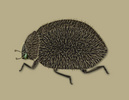
Scymninae. © 2009 Natalia Vandenberg
|
Explore some of the common body types found within the family Coccinellidae by mousing over the numbered legend below. What advantages do these different forms possess? What are their respective vulnerabilities? More elongate <----1--- -----2----- -----3----- -----4----- ---5----> More compact |
Coccinellids are quite similar to endomychid beetles, but lack a frontoclypeal suture and have the mandibular mola reduced or absent. They also lack the impressed lines on the base of the pronotum which are characteristic of many endomychids.
The family Corylophidae also shares many affinities with Coccinellidae, but Corylophids posess a functional spiracle on abdominal segment 7 (lacking in Coccinellidae), have the galea and lacinia of the mouthparts fused into a single lobe (separate structures in Coccinellidae), and have a distinct form to the male genitalia.
Classification
 Carl Linnaeus |  L. Redtenbacher |  M. E. Mulsant |
Present day members of the family Coccinellidae first appeared in Linnaeus’ (1758) Systema Naturae under the genus Coccinella, which contained, at the time, 36 species. Redtenbacher (1844) provided the first internal classification system for the family by recognizing two biologically defined groups, the plant feeders and the aphid feeders. His phytophagous group corresponds to the subfamily Epilachninae (sensu Sasaji 1968) but the aphidophagous one spans the other currently recognized subfamilies. Mulsant’s (1846; 1850) interpretation of the family diversity divided Coccinellidae into the “Trichoisomides” (the hairy species) and the “Gymnosomides” (the glabrous ones), a system that was even more artificial than its predecessor. Mulsant, however, was the first author to recognize supra-generic categories for the family many of which correspond to the current tribes in Coccinellidae. Korschefsky’s (1931) classification recognized the subfamilies Epilachninae, Coccinellinae, and Lithophilinae. This system is consistent with that of Redtenbacher but further subdivides the entomophagous taxa (the so-called “aphidophaga”) on the basis of the tarsal structure. Despite these advances, the classification of Coccinellidae was still rudimentary and extremely artificial until the second half of the 20th century.
In the most influential series of works of the 20th century dealing with this topic, Sasaji (1968; 1971a, b) revised the classification of the family, proposing six subfamilies: Sticholotidinae, Coccidulinae, Scymninae, Chilocorinae, Coccinellinae and Epilachninae. This system was widely accepted and remains the primary reference for the family (e.g., Booth et al., 1990; Pakaluk et al., 1994; Lawrence and Newton, 1995; Kuznetsov, 1997). Additional subfamilies have since been recognized: Azyiinae and Exoplectrinae, elevated from tribal status (Gordon, 1994); Ortaliinae, for Ortaliini plus Noviini (Kovář, 1996); and Hyperaspidinae, for Hyperaspidini plus Brachiacanthini (Duverger 1989; 2001) (Giorgi et al. 2009). In the most recent major contribution to the systematics of Coccinellidae, Kovář (1996) proposed a classification of Coccinellidae worldwide, recognizing seven subfamilies and 38 tribes. Duverger (2003) attempted to apply a distinct subfamily name to each of the 18 major groupings in Kovář 's dendrogram (1996). Many of these names, however, were invalid (based on junior synonyms), misspelled, or applied inconsistently within the different sections of the same paper.
Pope (1989) and Vandenberg (2002) pointed out major caveats in the current classification of Coccinellidae, emphasizing the lack of morphological support for most of the recognized subfamilies. Ślipiński (2007) acknowledged the criticism and proposed a more conservative system, in which only two subfamilies are recognized, Microweiseinae (=Scotoscymninae Duverger =Sticholotidinae sensu Kovář 1996, in part), and Coccinellinae. None of these various classifications has received a universal following (see Table below for alternative classifications).
Many regional taxonomic monographs have been published in the last three decades, including: Fürsch (1967) [European fauna]; Gordon (1985) [North America]; Hoang (1982; 1983) [Vietnam]; Iablokoff-Khnzorian (1982) [Palearctic and Oriental regions]; Kuznetsov (1997) [Russian Far East]; Pang and Mao (1979) [China]; Pope (1989) [Australian Coccinellinae]; Sasaji (1971a) [Japan]; and Savoiskaya (1983) [Central Asia and parts of the former USSR].
Table 1: Comparison of high-level classification systems of Sasaji (1971a), Kovář (1996) and Ślipiński (2007)
| | ||
| Sasaji (1971a) | Kovář (1996) | Ślipiński (2007) (Australian taxa only) |
|---|---|---|
| | ||
|
|
|
| Coccinellinae | ||
|
|
|
|
|
|
|
|
|
|
| |
|
|
|
| ||
|
| |
|
|
|
|
|
|
|
|
|
- 1Includes Oryssomini
- 2Includes Exoplectrini, Scymnini, Stethorini, and taxa near Shirozuellini and Azyiini
- 3Includes Halyziini
Discussion of Phylogenetic Relationships
Coccinellidae and the Cerylonid Series
Molecular evidence supports Coccinellidae as belonging to the Cerylonid Series (Hunt et al., 2007; Robertson et al., 2008) but the closest relative of the family remains unclear. Early morphological studies supported hypotheses that the sister-group was a clade comprising Endomychidae plus Corylophidae (Crowson, 1981; Sasaji, 1971) or one comprising Endomychidae plus Alexiidae (Pakaluk and Ślipiński, 1991). These studies, however, were not based on formal phylogenetic analyses.
Formal phylogenetic studies that provide insights about the closest relatives of Coccinellidae resulted, each, in different answers. In these studies, the following taxa were recovered as close relatives of Coccinellidae: Endomychidae (Tomaszewska, 2000), Anamorphinae (Endomychidae) plus Alexiidae (Hunt et al., 2007), Corylophidae (Tomaszewska, 2005), Leiestinae (Endomychidae) (Robertson et al. 2008, parsimony) and Endomychidae minus Anamorphinae or Corylophidae plus Anamorphinae (Robertson et al. 2008, Bayesian). Since each of these studies addressed different phylogenetic questions, the taxonomic sampling was fairly different, which might account for the noted disparities.
Coccinellidae Subfamilies
Sasaji (1968, 1971) provided the first attempt to address the higher-level phylogenetic relationships of Coccinellidae (see fig. below). Under Sasaji’s classical phylogenetic scheme, three main branches are recognized. At the base is the subfamily Sticholotidinae, considered the most primitive group of coccinellids. On the main branch, one lineage includes the subfamilies Scymninae and Chilocorinae, and other includes Coccidulinae, Coccinellinae and Epilachninae. In the latter group, Coccidulinae was considered the sister group to the coccinelline plus epilachnine branch.
Kovář’s (1996) hypothesis was very similar to Sasaji’s (1968, 1971), differing only in placing Coccidulinae at the base of the scymnine plus chilocorine branch. He also recognized a seventh subfamily, Ortaliinae, comprised of the former Coccidulinae tribe, Noviini, and the former Scymninae tribe, Ortaliini.
In spite of the relevance of these contributions, both Sasaji (1968, 1971) and Kovář’s (1996) studies have some limitations. In both studies the hypotheses were not generated by formal phylogenetic methods, thus none of the clades are supported by synapomorphies. Sasaji’s study did not include any neotropical coccinellids, being mostly restricted to the Japanese fauna. Kovář’s (1996) study was more comprehensive in terms of diversity.
The first formal cladistic analysis was conducted by Yu (1994). His study used adult and larval morphological characters. The partitions (adults vs. larvae) were treated separately, and produced drastically conflicting topologies. The adult-based topology had few points of agreement with previous hypotheses. Yu (1994) recovered all Sticholotidinae at the base, but not as a monophyletic group. As with Sasaji’s (1968) hypothesis, this study supports a clade containing the subfamilies Chilocorinae, Coccidulinae and Scymninae, but none of these subfamilies were recovered as monophyletic. Coccidulinae was recovered as paraphyletic with respect to Ortaliinae, Chilocorinae, and Scymninae. Chilocorinae and Ortaliinae were nested within Scymninae. The sister group relationship between Epilachninae and Coccinellinae was not supported in this study. Epilachninae diverged from the rest of the family at the next highest node, followed by Coccinellinae. A close relationship between Serangiini and Sukunahikonini was the only point of similarity between the adult and larval topologies. 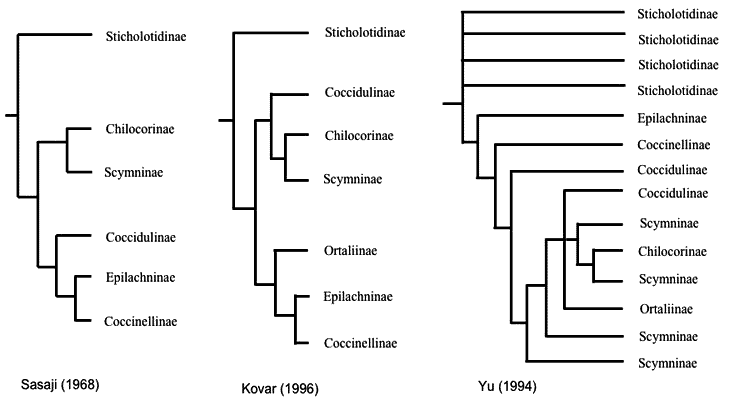
Giorgi et al. (2009) conducted a parsimony analysis using the nuclear ribosomal genes 18S rDNA and 28S rDNA to address the evolution of food preferences in Coccinellidae. As in the previous studies, the subfamily Sticholotidinae was supported as the sister group of the rest of the coccinellids, but only in part. Other Sticholotidinae included in the analysis, were supported as more advanced forms. The resulting topology of this study disagrees with Sasaji’s (1968) classic hypothesis in many points. Unfortunately the relationships between most of the major branches were not strongly supported.
Thus, an accurate definition of the main lineages of coccinellids as well as the relationships between them still remains to be established.
Color Pattern Illustrations
References
Booth, R.G., Cox, M.L., Madge, R.B., 1990. IIE guides to insects of importance to man. 3. Coleoptera. International Institute of Entomology, London.
Crowson, R.A., 1981. The Biology of the Coleoptera. Academic Press, London.
Duverger, C., 1989. Contribution à l’étude des Hyperaspinae. 1ère note (Coleoptera, Coccinellidae). Bulletin de la Société linnéenne de Bordeaux 17, 143-157.
Duverger, C., 2001. Contribution à la connaissance des Hyperaspinae. 2ème note. Bulletin de la Société linnéenne de Bordeaux 29, 221–228.
Duverger, C., 2003. Phylogénie des Coccinellidae. Bulletin de la Société linnéenne de Bordeaux 31, 57–76.
Fürsch, H., 1967. Familie: Coccinellidae (Marienkäfer). In: Freude, H., Harde, K.W., Lohse, G.A. (Eds.), Die Käfer Mitteleuropas 7. Goecke and Evers, Krefeld, pp. 227–278.
Giorgi, J.A., Vandenberg, N.J., McHugh, J. V.,Forrester, J., Ślipiński, A., Miller, K. B., Shapiro, L. R., Whiting, M. F. The evolution of food preferences in Coccinellidae. Biological Control 51, 215-231.
Gordon, R.D., 1985. The Coccinellidae (Coleoptera) of America north of Mexico. Journal of the New York Entomological Society 93, 654-678.
Gordon, R.D., 1994. South American Coccinellidae (Coleoptera) Part III: definition of Exoplectrinae Crotch, Azyinae Mulsant, and Coccidulinae Crotch; a taxonomic revision of Coccidulini. Revista Brasileira de Entomologia 38, 681-775.
Hoang, D.N., 1982. Bo Rua Coccinellidae o Viet Nam (Insecta, Coleoptera) Tap 1. Nha Xuat Ban Khoa Hoc Va Ky Thuat, Hanoi.
Hoang, D.N., 1983. Bo Rua Coccinellidae o Viet Nam (Insecta, Coleoptera) Tap 2. Nha Xuat Ban Khoa Hoc Va Ky Thuat, Hanoi.
Hunt, T., Bergsten, J., Levkanicova, Z., Papadopoulou, A., St. John, O., Wild, R., Hammond, P., Ahrens, D., Balke, M., Caterino, M., Gómez-Zurita, J., Ribera, I., Barraclough, T., Bocakova, M., Bocak, L., Vogler, A., 2007. A Comprehensive Phylogeny of Beetles Reveals the Evolutionary Origins of a Superradiation. Science 318, 1913-1916.
Iablokoff-Khnzorian, S.M., 1982. Les Coccinelles, Coleoptères-Coccinellidae. Tribu Coccinellini des Regions Palearctique at Orientale. Société Nouvelle des Editions Boubée, Paris.
Korschefsky, R., 1931., Pars. 120: Coccinellidae. II. In: Junk, W., Schenkling, S. (Eds.), Coleopterorum Catalogus. W. Junk, Berlin, pp. 225-659.
Kovár, I., 1996. Phylogeny. In: Hodek, I., Honek, A. (Eds.), Ecology of Coccinellidae. Kluwer Academic Publishers, Dordrecht, pp. 19-31.
Kuznetsov, V.N., 1997. Lady beetles of the Russian Far East, Memoir No. 1. Center for Systematic Entomology. Sandhill Crane Press, Gainesville.
Lawrence, J.F., Newton, A.F., 1995. Families and subfamilies of Coleoptera (with selected genera, notes, references and data on family-group names). In: Pakaluk, J., Slipinski, S. A. (Eds.), Biology, phylogeny and classification of Coleoptera: papers celebrating the 80th birthday of Roy A. Crowson. Volume 2. Museum i Instytut Zoologii PAN, Warsaw, pp. 779-1006.
Linnaeus, C. 1758. Systema naturae per regna tria naturae, secundum classes, ordines, genera, species cum characteribus differentiis, synonymis, locis.
Mulsant, M. E., 1846. Histoire Naturelle des Coléoptères de France. Sulcicolles-Sécuripalpes. Maison, Paris.
Mulsant, M. E., 1850. Species des Coléoptères Trimcres Sécuripalpes. Annales des Sciencies Physiques et Naturelles, d'Agriculture et d'Industrie, publiées par la Société nationale d'Agriculture, etc., de Lyon, Deuxicme Série, 2.
Pakaluk, J., Slipinski, S.A., 1990. Review of Eupsilobiinae (Coleoptera: Endomychidae) with descriptions of new genera and species from South America. Review Suisse de Zoologie 97, 705-728.
Pakaluk, J., Slipinski, S.A., Lawrence, J.F., 1994. Current classification and family-group names in Cucujoidea (Coleoptera). Genus 5, 223-268.
Pang, X., Mao, J., 1979. Economic insect fauna of China-Coleoptera: Coccinellidae. II. Science Press, Beijing.
Pope, R.D. 1989, A revision of the Australian Coccinellidae (Coleoptera). Part 1. Subfamily Coccinellinae. Invertebrate Taxonomy 2, 633-735.
Redtenbacher, L., 1844. Tetamen dispositionis generum et specierum Coleopterorum Pseudotrimeorum. Vindobonae: Archiducatus Austriae.
Robertson, J.A., Whiting, M.F., McHugh, J.V., 2008. Searching for natural lineages within the Cerylonid Series (Coleoptera: Cucujoidea). Molecular Phylogenetics and Evolution 46, 193-205.
Sasaji, H., 1968. Phylogeny of the family Coccinellidae (Coleoptera). Etizenia, Occasional Publications of the Biological Laboratory, Fukui University, 35, 1–37.
Sasaji, H., 1971a. Fauna Japonica. Coccinellidae (Insecta: Coleoptera). Academic Press of Japan, Keigaku Publishing, Tokyo.
Sasaji, H., 1971b. Phylogenetic positions of some remarkable genera of the Coccinellidae (Coleoptera), with an attempt of the numerical methods. Memoirs of the Faculty of Education Fukui University, Series II (Natural Science) 21, 55–73.
Savoiskaya, G.I., 1983. Larvae of coccinellids (Coleoptera, Coccinellidae) of the fauna of the USSR. Zoologicheski Institut, Leningrad.
Slipinski, A., 2007. Australian Ladybird Beetles (Coleoptera: Coccinellidae): their biology and classification. Australian Biological Resources Study, Canberra.
Tomaszewska, K.W., 2000. Morphology, phylogeny and classification of adult Endomychidae (Coleoptera: Cucujoidea). Annales Zoologici (Warszawa) 50, 449-558.
Tomaszewska, K.W., 2005. Phylogeny and generic classification of the subfamily Lycoperdininae with a re-analysis of the family Endomychidae (Coleoptera: Cucujoidea). Annales Zoologici (Warszawa), 1-172.
Vandenberg, N.J., 2002. Coccinellidae Latreille 1807. In: Arnett, R.H., Jr., Thomas, M.C., Skelley, P.E., Frank, J.H. (Eds.), American Beetles. CRC Press, Boca Raton, pp. 371-389.
Yu, G., 1994. Cladistic analyses of the Coccinellidae (Coleoptera). Entomologica Sinica 1, 17-30.
Information on the Internet
- Coccinellidae of Chile
- Coccinellidae of Peru
- Coccinellidae of the Indian subcontinent
- Ladybirds of Australia
- CSIRO Entomology - Family Coccinellidae (Australia)
- Ladybugs - University of Florida
- Coccinellidae by John F. Lawrence
- The London and Essex Ladybird Surveys
- Lady Beetles - Cornell University
- Family Coccinellidae - Ladybird Beetles - BugGuide.Net
- Coccinellidae: Ladybirds of Western-Europe
- Ladybird Survey
Title Illustrations

| Scientific Name | Psyllobora vigintiduopunctata (L.) |
|---|---|
| Specimen Condition | Live Specimen |
| Identified By | Stanislav Krejcik |
| Behavior | Larva on powdery mildew. |
| Life Cycle Stage | Larva |
| Copyright | © Stanislav Krejcik |
| Scientific Name | Coccinellidae |
|---|---|
| Image Use |
 This media file is licensed under the Creative Commons Attribution-NonCommercial License - Version 3.0. This media file is licensed under the Creative Commons Attribution-NonCommercial License - Version 3.0.
|
| Copyright |
©

|
| Scientific Name | Epilachna varivestis Mulsant |
|---|---|
| Location | United States |
| Specimen Condition | Live Specimen |
| Source | #1235187 |
| Source Collection | Bugwood Network/Forestry Images |
| Image Use |
 This media file is licensed under the Creative Commons Attribution License - Version 3.0. This media file is licensed under the Creative Commons Attribution License - Version 3.0.
|
| Copyright | © Clemson University, USDA Cooperative Extension Slide Series |
About This Page
Special thanks to Dr. Joseph V. McHugh for reviewing the text and offering useful comments/suggestions. Partial support for the construction of this page was provided by the H.H. Ross Endowment of the Department of Entomology at the University of Georgia, through an NSF AToL grant EF-0531665 to M.F. Whiting (subcontract to J.V. McHugh) and through an NSF PEET grant (DEB-0329115) to J.V. McHugh, M.F. Whiting, and K.B. Miller.

University of Georgia, Athens, Georgia, USA
Natalia Vandenberg

Systematic Entomology Lab (SEL)
Correspondence regarding this page should be directed to Adriano Giorgi at and Natalia Vandenberg at
Page copyright © 2011 and Natalia Vandenberg
 Page: Tree of Life
Coccinellidae. Lady beetles, Ladybird beetles, Ladybugs.
Authored by
Adriano Giorgi and Natalia Vandenberg.
The TEXT of this page is licensed under the
Creative Commons Attribution-NonCommercial License - Version 3.0. Note that images and other media
featured on this page are each governed by their own license, and they may or may not be available
for reuse. Click on an image or a media link to access the media data window, which provides the
relevant licensing information. For the general terms and conditions of ToL material reuse and
redistribution, please see the Tree of Life Copyright
Policies.
Page: Tree of Life
Coccinellidae. Lady beetles, Ladybird beetles, Ladybugs.
Authored by
Adriano Giorgi and Natalia Vandenberg.
The TEXT of this page is licensed under the
Creative Commons Attribution-NonCommercial License - Version 3.0. Note that images and other media
featured on this page are each governed by their own license, and they may or may not be available
for reuse. Click on an image or a media link to access the media data window, which provides the
relevant licensing information. For the general terms and conditions of ToL material reuse and
redistribution, please see the Tree of Life Copyright
Policies.
- First online 09 November 2009
- Content changed 09 November 2009
Citing this page:
Giorgi, Adriano and Natalia Vandenberg. 2009. Coccinellidae. Lady beetles, Ladybird beetles, Ladybugs. Version 09 November 2009 (under construction). http://tolweb.org/Coccinellidae/9170/2009.11.09 in The Tree of Life Web Project, http://tolweb.org/




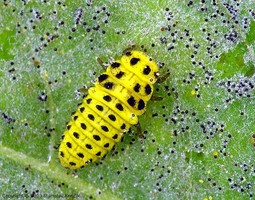
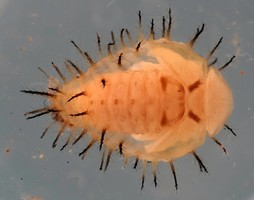
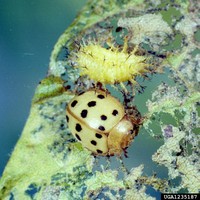

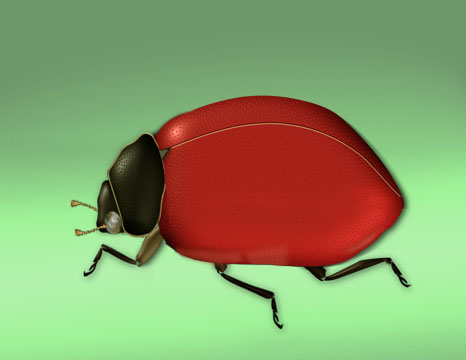
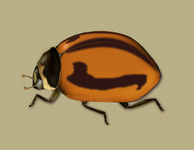
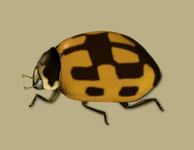
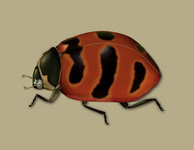

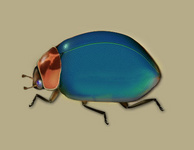
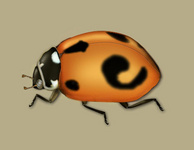


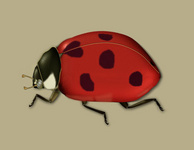




 Go to quick links
Go to quick search
Go to navigation for this section of the ToL site
Go to detailed links for the ToL site
Go to quick links
Go to quick search
Go to navigation for this section of the ToL site
Go to detailed links for the ToL site